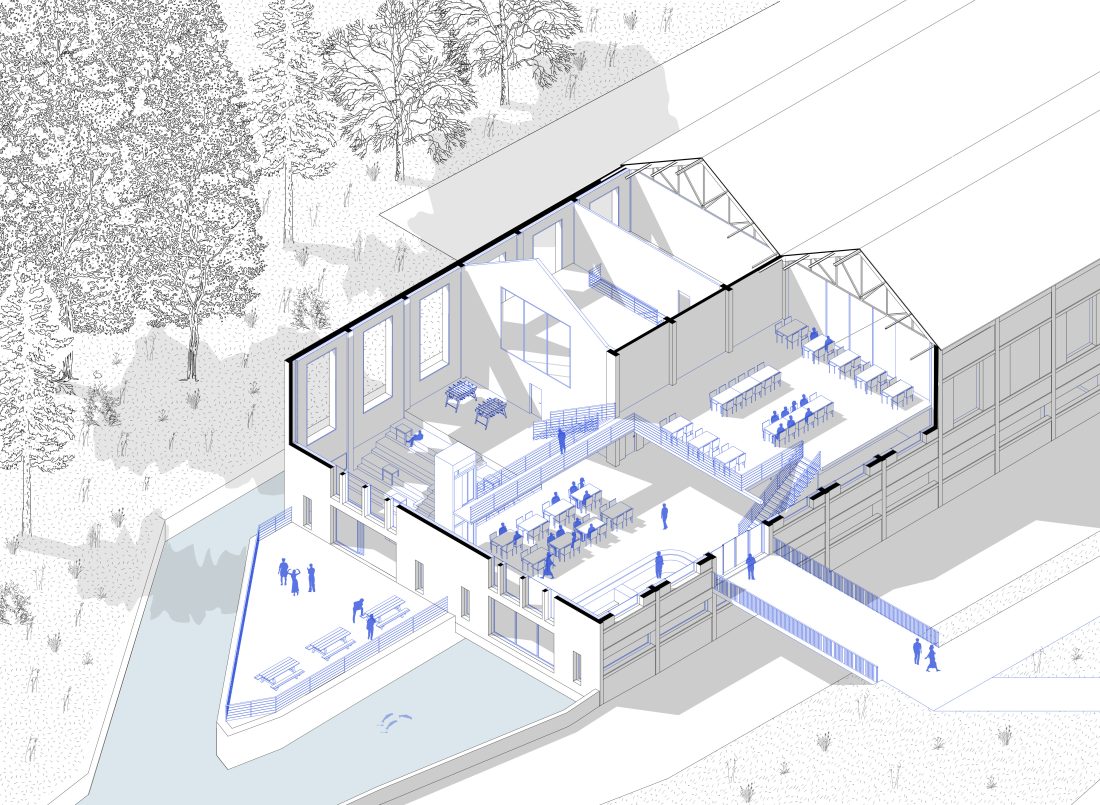La Page d’Après
2024
Auteur(s)
Yann Lijour
Enseignant(s)
Minh Man Nguyen, Emilien Cristia
Département
DM
À Ergué-Gabéric en Bretagne, les papeteries de l’Odet sont réputées pour avoir fabriqué le papier OCB. Un canal de 1500 m créé pour acheminer l’eau jusqu’à la papeterie a été le point de départ d’un questionnement sur l’eau.
Face à un contexte de réindustrialisation du pays, la Page d’Après envisage de réintroduire la fabrication du papier sur le site. L’utilisation du canal permet de produire de l’électricité pour fabriquer un papier décarboné et local en recyclant les papiers du centre de tri rattaché à la commune. En fonction de sa disponibilité, l’eau définit les usages et les usagers qui occupent le site. L’eau est stockée quand elle est en surplus, quand il n’y en a pas assez, la production s’arrête. En parallèle, un programme muséal mettra en avant l’histoire du site, la fabrication du papier, ainsi que notre rapport à l’eau et à l’énergie. Une porosité entre le musée et l’usine créée des liens visuels durant toute la visite et se concrétise par la réunion des deux programmes en un café-restaurant, où visiteurs et papetiers peuvent se rencontrer, transmettre et partager leurs connaissances avec des ateliers ou des conférences.
version numérique consultable à la bibliothèque de l’école
Located at Ergué-Gabéric in Brittany, the Odet paper mills are famous for making OCB paper. A 1,500-metre canal created to carry water to the paper mill was the starting point for a reflexion on water.
Faced with the need to re-industrialise the country, Page d’Après plans to reintroduce paper manufacturing on the site. By using the canal to produce electricity, it will be able to manufacture paper that is low-carbon and local, by recycling paper from the sorting centre of the municipality. Depending on its availability, water defines the uses and users of the site. Water is stored when there is a surplus, and production stops when there is not enough.
At the same time, a museum programme will highlight the history of the site, how paper is made, and our relationship with water and energy. The porous relationship between the museum and the factory will create visual links throughout the visit, and the two programmes will be brought together in a café-restaurant, where visitors and papermakers can meet, pass on and share their knowledge through workshops and lectures.



